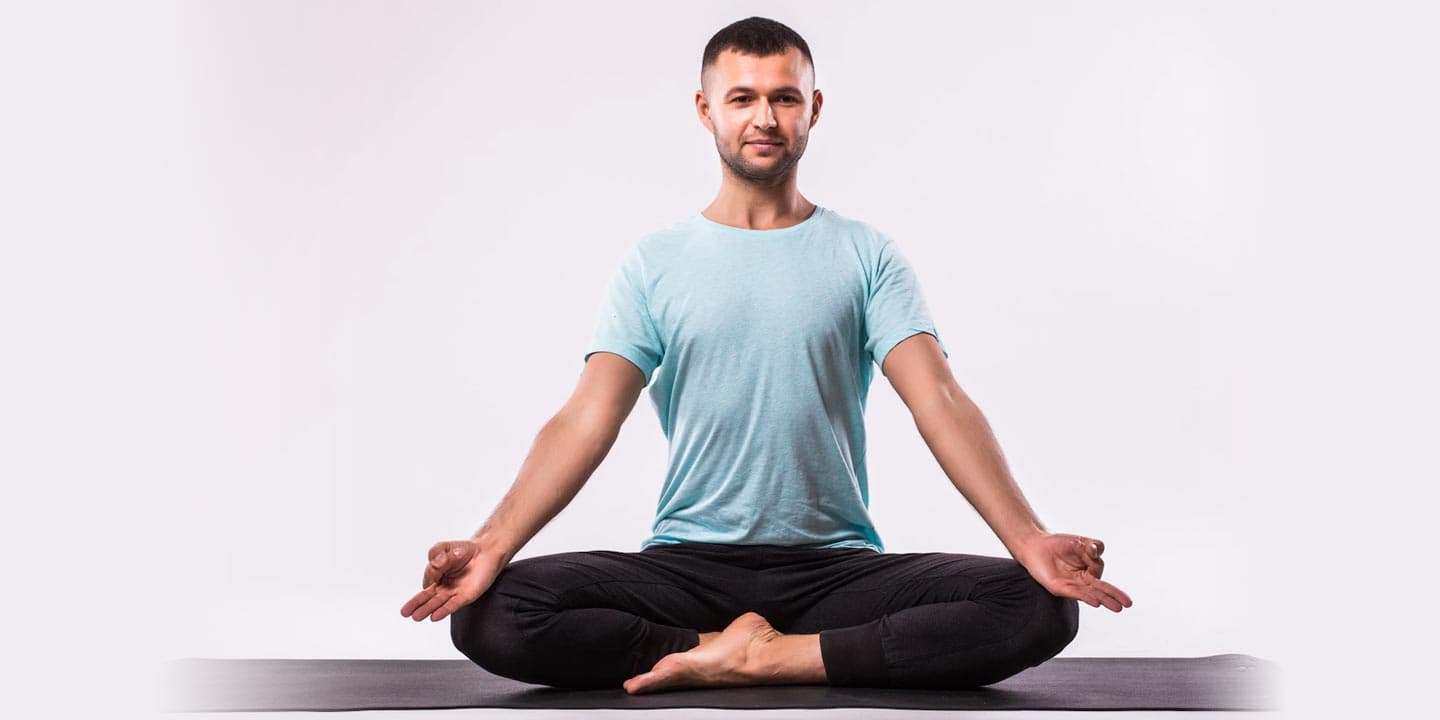How to manage diabetes with yoga, can diabetes be cured permanently by yoga?

Medically Reviewed By
Dr. Ragiinii Sharma
Written By Prekshi Garg
on Nov 15, 2022
Last Edit Made By Prekshi Garg
on Mar 18, 2024

Diabetes Mellitus is the most common lifestyle disorder. Diabetes can be of two types- type-1 and type-2, depending on the age of onset and the way the cells take up the blood glucose.
Many understand diabetes as a chronic, life-long disorder that needs proper treatment and management with diet, lifestyle changes, insulin therapy, and exercise. But for diabetes, wise lifestyle choices can help keep blood glucose levels under control and reverse diabetes in the long run.
Yoga is an excellent way of exercising. Yoga for diabetes is essential to keep the mind and body healthy. It imbibes yoga poses or asanas that can help regularise hormones, including insulin, and promote proper glucose channelling, and glucose uptake by the cells.
Yoga is not only a way of exercising but a way one can have a healthy life with health conditions like diabetes. This article explores some potential benefits of yoga while delving into yoga asanas useful in diabetes management.
Is diabetes preventable and manageable through yoga?
Diabetes is when a person’s pancreas produces less or no insulin. The reduced insulin in the body creates glucose build up in the blood. Sometimes, the cells do not use the body’s insulin effectively, and the cells get resistant to insulin.
Diabetes is of two types:
- Type 1 diabetes- An autoimmune condition where the immune cells destroy the pancreatic insulin-producing cells. And so, the pancreas fails to produce insulin. People with this condition require life-long insulin therapy.
- Type 2 diabetes- A condition caused majorly due to lifestyle issues, like lack of physical activity, improper lifestyle choices, or dietary habits, leading to insulin resistance or reduced insulin production.
According to the International Diabetes Federation diabetes atlas (eighth edition, 2017), nearly 425 million people are affected with diabetes globally. And this figure is expected to increase to almost 629 million by 2045. Experts predict sedentary habits and unhealthy dietary patterns are among the major risk factors.
Though psychological stress also increases the risk of developing diabetes, lack of physical activity was most concerning as it can increase the risk of diabetes by 3 times and the risk of coronary artery disease by 2.4 times.
It goes untold that diabetes needs to be managed through diet, exercise, and insulin medications. Yoga, adopted along with a diet and other healthy lifestyle changes, can help manage and prevent diabetes.
Yogic science is an ancient practice of breathing and postures that help regulate hormones. It helps improve pancreatic health, promoting insulin production and glucose metabolism. It helps control diabetes at an early stage and is also a proven method to reverse diabetes eventually.
Benefits of Yoga; an ancient science of wellness
Diabetes is a highly manageable condition. A poorly managed diabetes is associated with chronic health complications, such as:
- Damage of one or more nerves,
- Blood vessel disorders,
- Increased risk of heart ailments,
- Risk of having a sudden stroke,
- Kidney problems,
- Eye-related issues (diabetic retinopathy).
The above health complications can be prevented by proper diabetes management and treatment. Yoga is a scientific approach that culminates in exercise and healing. Yoga can help prevent and manage many chronic health conditions. Yogic postures and breathing improves flexibility and strength. It promotes mental well-being. However, it needs to be practiced under the supervision of an experienced yoga expert.
Yoga balances hormones and regulates biochemicals in the body. It reduces stress and improves blood circulation, contributing to better diabetes management. Here are some of the natural benefits of yoga for diabetic patients.
Promotes a healthy body weight
Being overweight or obese is one of the prime reasons for type 2 diabetes. Research has shown that regular yoga practice can benefit people with obesity issues, especially abdominal obesity. It improves effective glucose utilization, fat redistribution, and fat reduction.
Improves metabolism
Glucose uptake by the cells initiates energy production required by cells to carry out their metabolic and molecular functions. In diabetes, glucose cannot be taken by the cells as they turn insulin resistant, or there is a shortage of insulin in the body. This causes an irregular glucose metabolism and excess glucose in the blood. People with diabetes often experience fatigue, weakness, or tiredness as the body cannot produce enough energy.
Yoga with breathing exercises modulates glucose uptake. It helps the cells effectively convert blood glucose into energy. And so, an add-on therapy for people with diabetes.
Reduces cholesterol
People with diabetes often experience a disturbed metabolism of many essential nutrients, including lipids. Hence diabetes is related to an increase in cholesterol levels.
Regular yoga practice stimulates lipid metabolism and reduces cholesterol levels in the body. It can significantly lower the LDL and total cholesterol count and increase HDL levels. Studies have shown how yoga can invariably reduce body mass index (BMI) and effectively reduces cardiovascular disease risk with diabetes and cholesterol management.
Improves cardiovascular health
Diabetes is commonly associated with an increased risk of cardiovascular complications. It can damage the smaller and larger blood vessels, causing an increased probability of heart attack and strokes.
Diabetes is usually linked to kidney issues. Poorly managed diabetes and lack of physical exertion can damage the kidneys. Diabetes can also lead to foot amputations, eye disorders (retinopathy), and blindness.
Yoga can help keep diabetes under control while reducing blood pressure, cholesterol, and triglyceride levels. It can sensitize the cells to insulin and improve cardiovascular conditions. Yoga is a mind-body exercise that can keep various diabetes-associated conditions away through effective diabetes management.
Prevents diabetes-related neuropathy
Neuropathy is a condition where there is a dysfunction or damage of nerves. It can be a significant complication of prolonged diabetes. Though diagnosed in a few cases of diabetes, it can commence with slight tingling of the hands and feet and progress to sensation loss. Neuropathy can also impede internal organ functioning.
However, a study published in the Indian Journal of Physiology and Pharmacology indicated the importance of yoga in improving neural health. 30-40 minutes of yoga a day can show beneficial effects on blood glucose levels, stabilise hormonal levels, and improve metabolism and neural functioning.
Yoga Asanas for Diabetes
When we talk about yoga asanas, the first asana beneficial for diabetes is Surya Namaskara. It is the first salutation you give to the rising sun. Surya namaskar helps as a warm-up asana before exercise, walking, jogging, running, cycling, or even other yoga asanas.
1. Surya namaskar (Sun salutation)
Benefiting Effects - Stimulates insulin production through brain signaling.

2. Supta matsyendrasana
Benefiting Effects - Stretches the internal abdominal organs, and improves pancreatic health and digestion. It also takes care of blood glucose levels.

3. Paschimottanasana
Benefiting Effects - It is an excellent pose for people with diabetes. It controls diabetes, reduces blood pressure, and can relieve stress, fatigue, headache, and anxiety.

4. Viparita Karani
Benefiting Effects - Boosts blood circulation and energy levels while helping maintain optimum blood sugar levels.

5. Bhujangasana
Benefiting Effects - Improves muscle strength, lowers blood pressure and blood sugar levels.

6. Dhanurasana
Benefiting Effects - Rejuvenates pancreatic cells through alternating abdominal contractions and regulates blood sugar levels.

7. Shavasana
Benefiting Effects - Calms the mind and body, and helps lower blood pressure. It relaxes the body while regularising blood sugar levels.

8. Kapalbhati
Benefiting Effects - Helps in the production of insulin and controlling glucose levels in the blood

9. Agnisar kriya
Benefiting Effects - Increases blood flow in the pancreatic area, improves pancreatic functions. Boosts metabolism and facilitates proper functioning of the abdominal organs.

10. Anulom vilom
Benefiting Effects - Improves health-related fitness, i.e., cardiorespiratory endurance, flexibility, and body fat percentage.

11. Bhramari
Benefiting Effects - Soothing and calming effect on the mind, improves mental and physical health.

12. Sheetali/Sheetkari
Benefiting Effects - Lowers blood pressure and cools the body.

13. Chandra bhedan
Benefiting Effects - Initiates neurological stimulations.

14. Surya bhedan
Benefiting Effects - Helps lower blood sugar levels.

15. Bhastrika (bellows breath)
Benefiting Effects - Regulation of pineal, pituitary, and adrenal glands, and regulates metabolism.

Frequently Asked Questions
Is yoga good for diabetes?
Yoga is a science that harmonises the body's biomolecular imbalance. In diabetic patients, regular yoga practice can increase the number of insulin receptors. It also improves insulin activities and normalises the insulin-glucose ratio in the blood.
Can yoga reverse type 2 diabetes?
Regular yoga practice can help one improve flexibility and reduce stress while lowering blood pressure and blood sugar levels in diabetic patients. Statistical data have shown that yoga can eventually reverse mild or pre-diabetic conditions in many.
Will yoga alone help manage diabetes?
Diabetes is a lifestyle disorder requiring a holistic treatment or management approach. Yoga must be incorporated along with dietary changes, other regular exercises, and other lifestyle modifications.
Conclusion
Diabetes treatment revolves around proper management of blood glucose levels, insulin regulation with diet, exercise, and insulin medications. Practising yoga regularly can improve one’s quality of life with diabetes.
Including yoga with other lifestyle habits can significantly improve overall well-being and manage diabetes. Yoga can help prevent diabetes and diabetic complications in people with prediabetes or mild (borderline) blood glucose levels.
Learning about the potential benefits of yoga, its risks, and how to carefully go about the yoga asanas is quintessential before you include them in your daily routine. Connect with your nearest yoga expert and develop the practice of yoga with proper inculcation of yogic poses and breathing.



